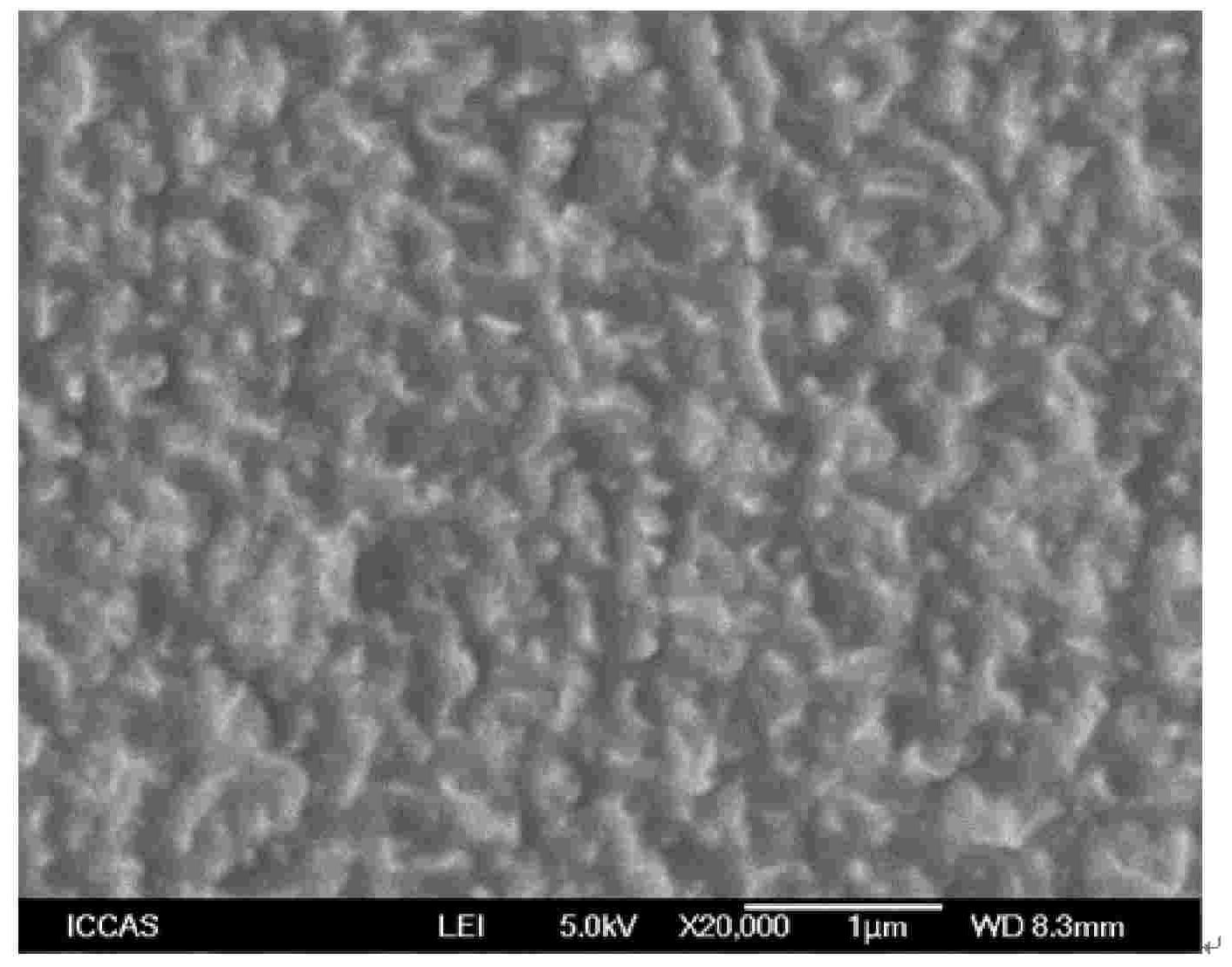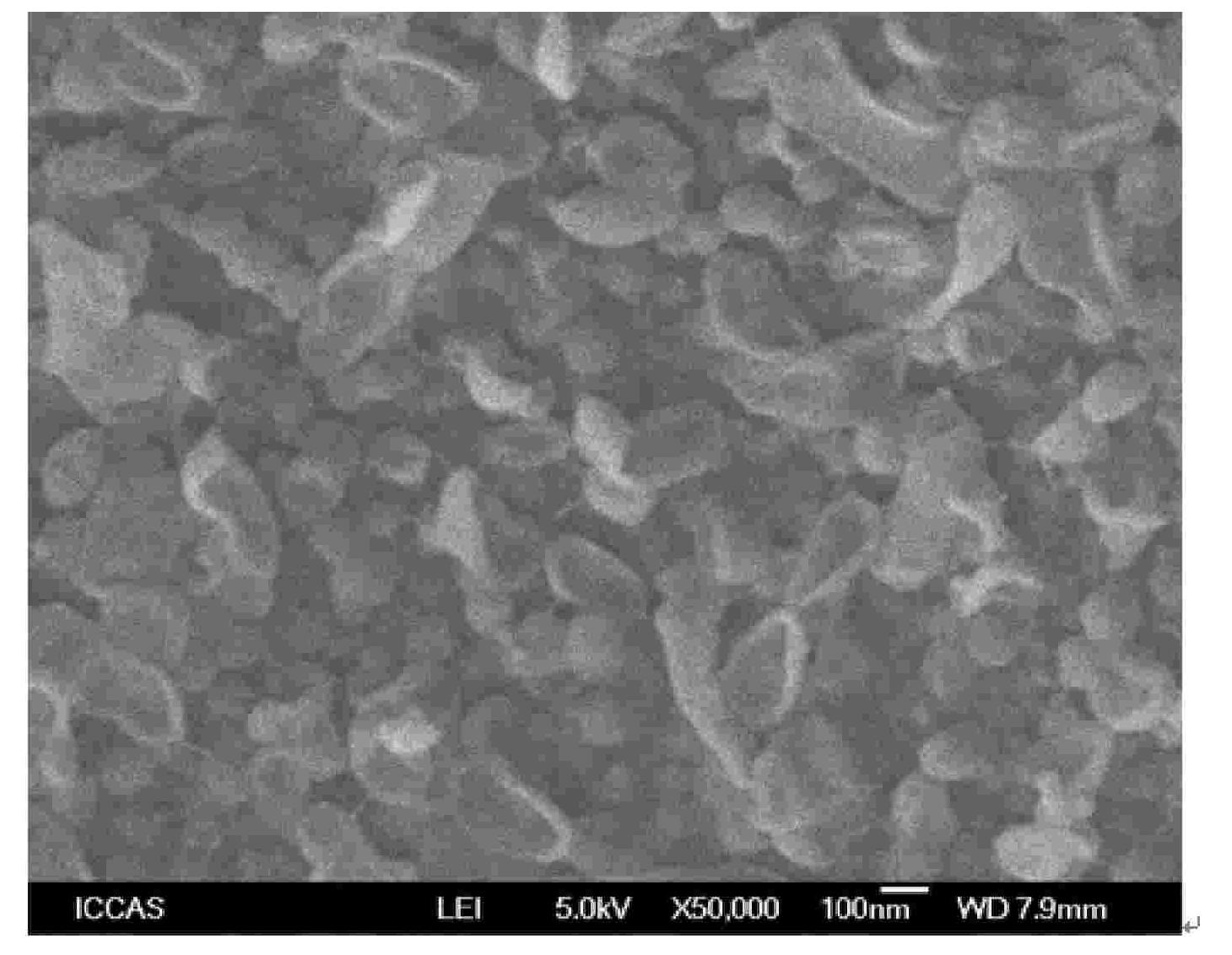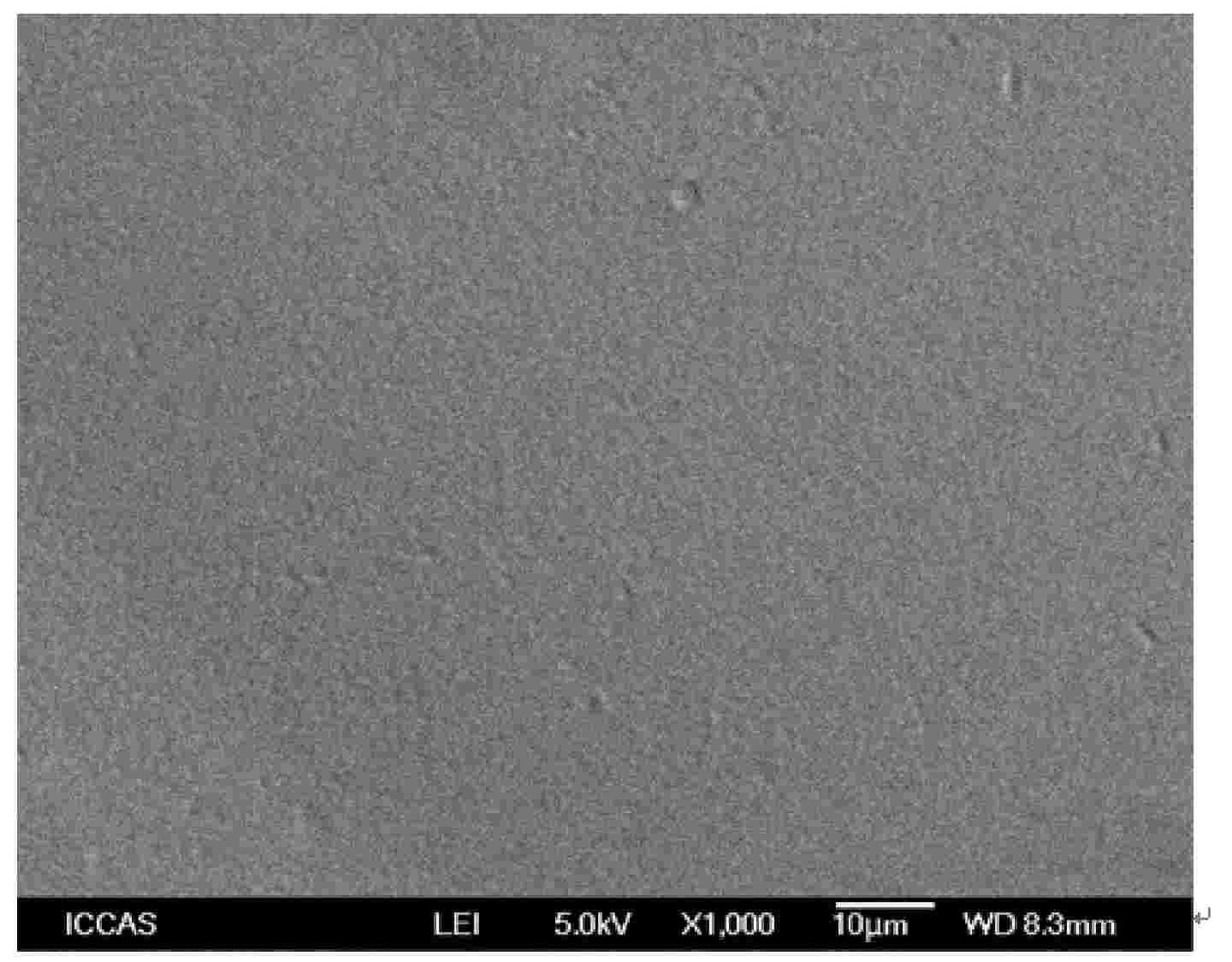Microbial contamination resistance composite reverse osmosis membrane and preparation method thereof
A reverse osmosis membrane, microorganism-resistant technology, applied in semi-permeable membrane separation, chemical instruments and methods, osmosis/dialysis water/sewage treatment, etc. Layer integrity and uniformity, affecting the application and promotion of reverse osmosis membranes, to achieve the effect of increasing the ability to resist microbial pollution and hydrophilicity, improving the performance of resistance to microbial pollution, and being easy to prepare and operate
- Summary
- Abstract
- Description
- Claims
- Application Information
AI Technical Summary
Problems solved by technology
Method used
Image
Examples
Embodiment 1
[0025] Embodiment 1: prepare the composite reverse osmosis membrane resistant to microbial contamination according to the following steps:
[0026] (1) Preparation of A solution: get m-phenylenediamine 21.9g and dissolve it in 657g water to prepare an aqueous solution whose weight concentration is 3%. 7.3g of pyrrolidone, 14.6g of 2% triethylamine and 29.2g of 4% camphorsulfonic acid were stirred and dissolved to obtain A solution.
[0027] (2) Preparation of solution B: 0.9 g of trimesoyl chloride was dissolved in 597 g of cyclohexane to prepare an organic solution with a weight concentration of 0.15%, and solution B was obtained after stirring and dissolving.
[0028] (3) Preparation of solution C: Dissolve 21.9 g of m-phenylenediamine in 642.4 g of water to prepare an aqueous solution with a weight concentration of 3%. Base pyrrolidone 7.3g, 2% triethylamine 14.6g and 4% camphorsulfonic acid 29.2g, then add 2% 2000ppm nano-silver aqueous solution 14.6g in aqueous solution,...
Embodiment 2
[0031] Embodiment 2: prepare the composite reverse osmosis membrane resistant to microbial contamination according to the following steps:
[0032] (1) Preparation of A solution: same as Example 1.
[0033] (2) Preparation of B solution: same as in Example 1.
[0034] (3) Preparation of C solution: same as in Example 1.
[0035] (4) Contact the porous polysulfone supporting layer with solution A for 20 seconds, remove excess solution with a rubber roller, then contact this polysulfone supporting layer with solution B for 10 seconds to form the first layer of polyamide surface layer, and wait for the organic solvent to volatilize to After drying, it was contacted with solution C for 10 seconds to form a second polyamide surface layer, and then placed in an oven at 80° C. for 5 minutes to obtain a composite reverse osmosis membrane resistant to microbial contamination.
[0036] Take the diaphragm and test it on the diaphragm monitoring platform under the test conditions of 2000p...
Embodiment 3
[0037] Embodiment 3: prepare composite reverse osmosis membrane according to the following steps:
[0038] (1) Preparation of A solution: same as in Example 1.
[0039] (2) Preparation of B solution: same as in Example 1.
[0040] (3) Preparation of C solution: same as in Example 1.
[0041] (4) Contact the porous polysulfone support layer with solution A for 20 seconds, remove excess solution with a rubber roller, then contact the polysulfone support layer with solution B for 10 seconds to form the first layer of polyamide surface layer, and wait for the organic solvent to volatilize After that, it was contacted with solution C for 20 seconds to form a second layer of polyamide surface layer, and then dried in an oven at 80°C for 5 minutes to obtain a composite reverse osmosis membrane product.
[0042] Take the diaphragm and test it on the diaphragm monitoring platform under the test conditions of 2000ppm NaCl aqueous solution, 225psi operating pressure, temperature 25°C, ...
PUM
 Login to View More
Login to View More Abstract
Description
Claims
Application Information
 Login to View More
Login to View More - R&D
- Intellectual Property
- Life Sciences
- Materials
- Tech Scout
- Unparalleled Data Quality
- Higher Quality Content
- 60% Fewer Hallucinations
Browse by: Latest US Patents, China's latest patents, Technical Efficacy Thesaurus, Application Domain, Technology Topic, Popular Technical Reports.
© 2025 PatSnap. All rights reserved.Legal|Privacy policy|Modern Slavery Act Transparency Statement|Sitemap|About US| Contact US: help@patsnap.com



